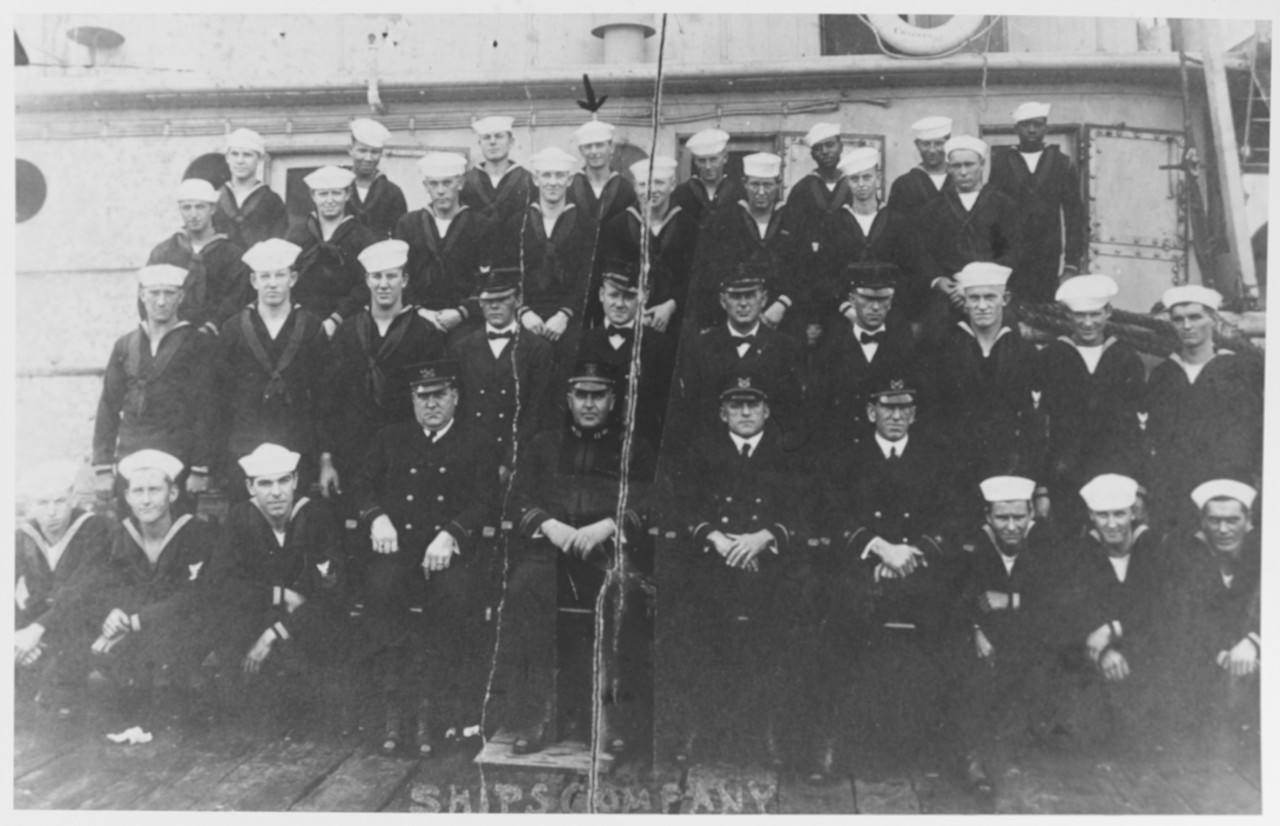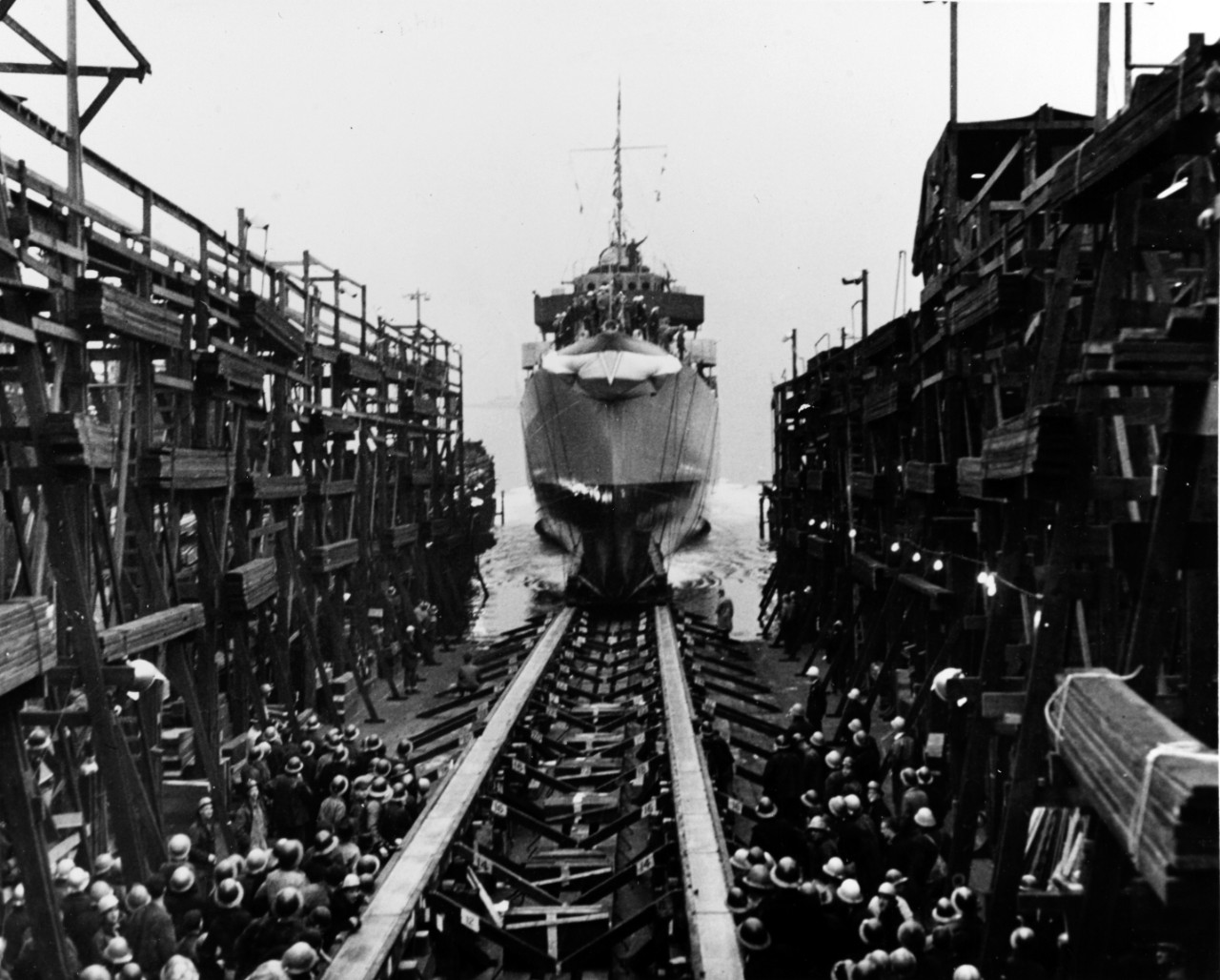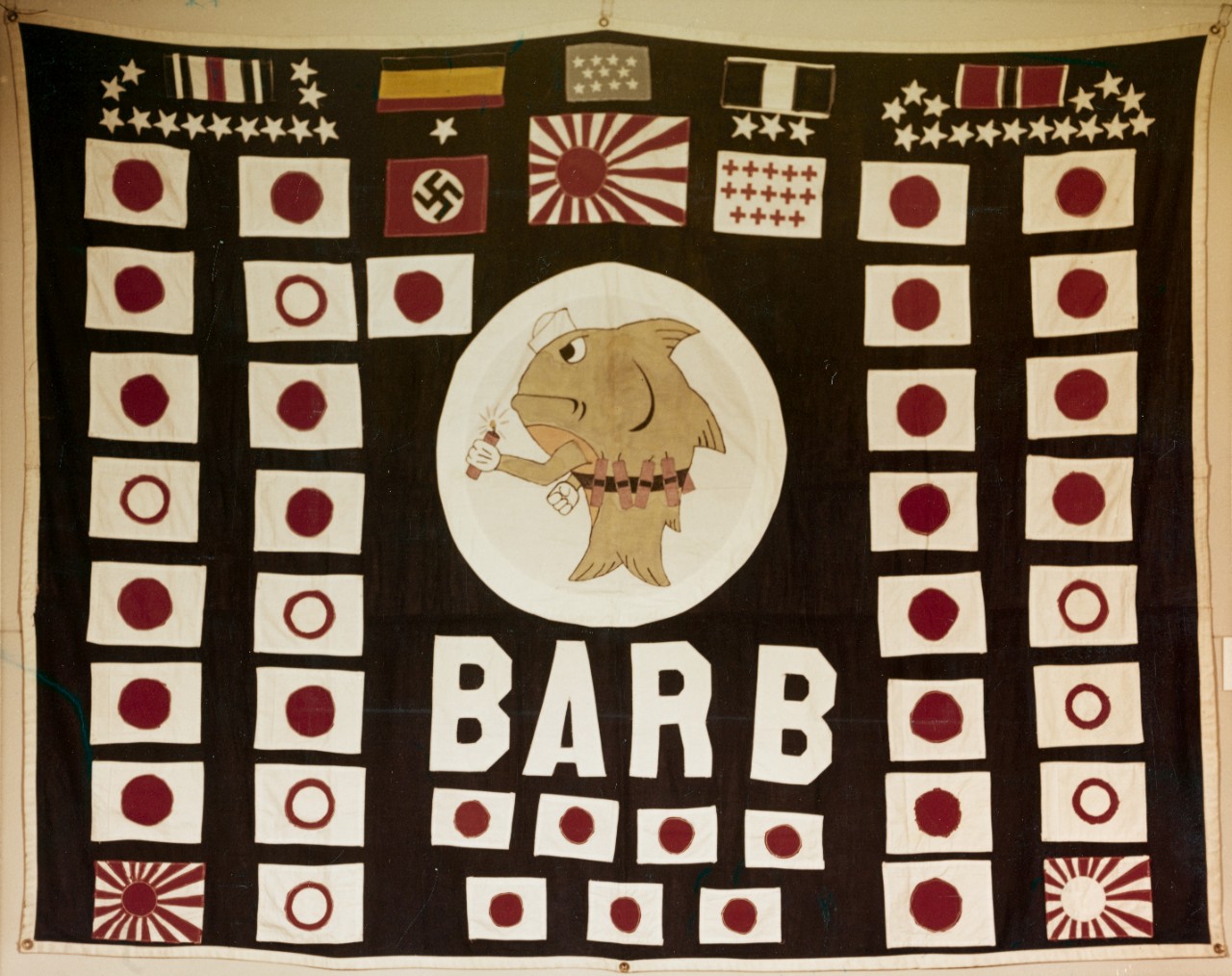H-Gram 060: Disappearance of Conestoga; Wreck of Johnston Identified; Last Known Survivor of Barb Passes
20 April 2021
Contents
- 100th Anniversary - Disappearance of Fleet Tug Conestoga (AT-54)
- Wreck of USS Johnston (DD-557) Positively Identified
- Last Known Survivor of Famed Submarine USS Barb Passes
This H-Gram covers the 100th anniversary of the disappearance of fleet tug Conestoga (AT-54), one of the greatest maritime mysteries of the 20th century, along with a short treatment of all 27 U.S. Navy ships and submarines lost with all hands due to weather and accident. Also covered is the recent positive identification of the destroyer Johnston (DD-557), the deepest shipwreck ever found, lost in particularly heroic action during the Battle off Samar in October 1944. In addition, the last known survivor of Eugene Fluckey’s Medal of Honor crew of the valiant submarine Barb (SS-220) passed away.
100th Anniversary─Disappearance of Fleet Tug Conestoga (AT-54)
On 25 March 1921, the fleet tug Conestoga departed Mare Island, transited through the Golden Gate strait and was never heard from again. She became the 21st U.S. Navy vessel lost with all hands due to accident or the elements to that date. Due to miscommunication, the U.S. Navy did not know Conestoga was missing until she was over two weeks overdue at Pearl Harbor. After two massive searches that revealed no confirmed traces of the tug, she was declared lost on 21 June 1921 and the 56 men aboard declared dead. Although not mentioned in standard U.S. Navy histories, the loss of Conestoga was a press sensation at the time, and a major embarrassment to the U.S. Navy. To add to the press frenzy, the submarine R-14 (SS-91) ran out of usable fuel while searching for Conestoga and made her way back to Hawaii under sails made of stitched bedding. The fate of Conestoga became one of the greatest mysteries of U.S. Navy history.
In October 2015, a wreck first located by sonar in 2009 just off the Farallones was confirmed to be that of Conestoga by the National Oceanic and Atmospheric Administration (NOOA) and the Naval History and Heritage Command (NHHC.) Although the exact cause of her loss remains unknown, she appeared to be making for a cove on southeast Farallon Island after losing her tow and becoming caught in heavy weather. She apparently sank suddenly three miles short of refuge, only about 27 miles from the Golden Gate, and a month before the U.S. Navy search even started.
For more on Conestoga (AT-54), please see H-060-1. For all U.S. Navy ships lost with all hands due to weather or accident, please see H-060-2.
Wreck of USS Johnston (DD-557) Positively Identified
On 27 March 2021, the manned deep submersible Limiting Factor, piloted by Mr. Victor Vescovo, found the forward two-thirds of the destroyer Johnston (DD-557) at a depth of 21,180 feet in the area of the Battle off Samar, which took place on 25 October 1944. The wreck site had previously been located in 2019 by Mr. Robert Kraft and his team aboard Research Vessel (R/V) Petrel. Petrel’s Remotely Operated Vehicle (ROV) identified a debris field on the edge of an underwater cliff at 20,400 feet, the extreme limit of the ROV’s capability. At the time, it was the deepest shipwreck ever found. The remains of the ship were definitely a Fletcher-class destroyer, but there was nothing to positively confirm whether the wreck was Johnston or Hoel (DD-533), which was also lost in valiant action against an overwhelming Japanese force in the same battle.
Limiting Factor has no depth limitation and Vescovo had taken the craft to the deepest points in all five oceans. (He had served 20 years in the reserves as a naval intelligence officer.) Vescovo found that the forward part of the destroyer had slid down the cliff face into even deeper water, and although peppered with shell holes, was relatively intact and clearly identifiable by the hull number 557. Thus, he confirmed the last resting place of one of the most heroic crews in the entire history of the U.S. Navy, for which her commanding officer, Ernest Evans, was awarded a posthumous Medal of Honor, the first Native American so recognized in the U.S. Navy.
For more on the search for Johnston, please see H-060-3. For more information on the Battle off Samar, see H-Gram 036.
Last Known Survivor of Famed Submarine USS Barb Passes
On 5 March 2021, Mr. John Henry Lehman, Jr., passed away in Hagerstown, Maryland, at age 98. He was the last known survivor of the valiant World War II submarine Barb (SS-220), whose exploits under skipper Eugene Fluckey were the stuff of legend, except true. Lehman joined Barb’s crew as a radar operator in early 1944 for her sixth war patrol. On that patrol, Barb bottomed out at 375 feet while under sustained Japanese attack, but survived, barely. On Barb’s seventh war patrol, then-Lieutenant Commander Eugene Fluckey was aboard as prospective commanding officer, on his way to a Medal of Honor and four Navy Crosses. Barb’s successful eighth war patrol was in the dangerous Sea of Okhotsk, where two other U.S. submarines were lost in the same period. On her ninth war patrol, Barb sank the Japanese escort carrier Unyo and a large tanker, and then rescued 14 Allied prisoners of war from a “Hell Ship” that had been sunk by other U.S. submarines. On her tenth war patrol, Barb sank a Japanese troopship, sending 490 troops and 203 crewmen to the bottom.
On Barb’s eleventh war patrol, Fluckey boldly took the submarine right into Namkwan Harbor, China, inflicting extensive damage on a Japanese convoy during a night surface attack and then made an equally daring escape. Fluckey was awarded the Medal of Honor for this action, for which he gave all credit to his crew. On her legendary twelfth and last war patrol, Barb was equipped with rocket launchers and bombarded Japanese ports and airfields on Hokkaido and Sakhalin Island (the first-ever land bombardment by submarine-launched rockets), then put a landing team ashore and blew up a train, the only “ground combat” in the Japanese home islands during the war. The crew of Barb received a Presidential Unit Citation for her eighth, ninth, tenth and eleventh war patrols, and a Navy Unit Commendation for her twelfth.
Lehman mustered out at the end of the war and went on to work as an engineer for 43 years for C&P Telephone (now Verizon) before crossing the Atlantic in a 36-foot sailboat. His obituary quoted him as saying, “Our country asked us to do a job, so we did, and came back to our ordinary lives.” An understatement if there ever was one.
For more on the Barb, see H-Gram 041-2.





